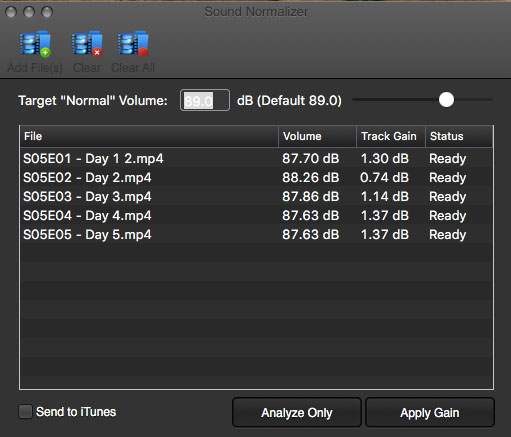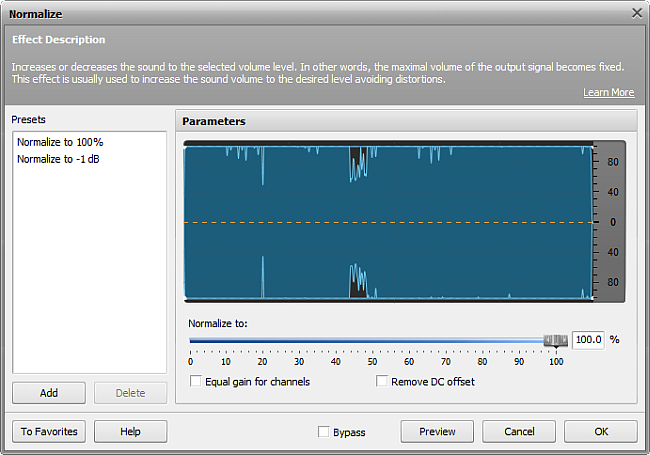
- Normalize video audio online how to#
- Normalize video audio online pro#
- Normalize video audio online software#
If you have a ‘work in progress’ track and you quickly want to get it up to 0db for checking on various sound systems, In some cases making it twice as long to complete, so if you leave it on all the time you can expect to be sitting around quite a lot longer waiting for your wav file to be generated. Does normalizing slow down track exporting?Īnother thing to be aware of is that exporting a track with normalize turned on will significantly slow the export process down. Ideally you want to normalise to an absolute maximum of -3db in order to leave them the head space they need.ĭon’t worry, the mastering process will make your track as loud as possible without compromising the dynamic quality of the track.

In order for an engineer to enhance your track and make it sound as great as possible, they need some ‘headroom’ to work with. If you’re wanting to send your recording to be professionally mastered, normalising to 0db is usually not the best idea. Meaning that each track’s loudness will still be the same relative to each other as before normalizing was done. So if the audio is increased in volume, it will be for the entire audio, not each track individually.

Does Ableton individually normalize each session track?Ībleton’s normalizing process is done on the entire mixdown of the track and not each track individually.

Having your audio at least a few db below zero is crucial if you’re wanting your track to be mastered post mixdown, as the mastering engineer will need this space (also known as ‘head room’) in order to enhance your audio. Note that there are no options to set the volume to anything other than 0db. Normalizing is done in Ableton by clicking file > export Audio/Video. Yes, Ableton Live does have a normalize option. You will find it during the process of exporting your project to a file.
Normalize video audio online pro#
Normalize video audio online how to#
Normalize video audio online software#
If I need to implement the algorithm from zero or if there is a python lib that can be used.When software ‘normalizes’ a piece of audio, it finds the loudest point in the audio (or ‘peak’). If the peak is -3db for example, normalizing will bring the entire audio recording up by 3db, so the highest peak now sits at 0db. I expect to know what is the algorthm that has to be used for this transformation so I can applied it inside my python code. This is the content of the raw data (out_1_2.raw is the file that contains audio that I imported in Audacity) A = np.fromfile('out_1_2.raw', dtype='int16')Īfter importing in Audacity the out_1_2.raw and applying the normalize effect as explained above, I exported from Audacity the new audible wave to a new raw file (out_1_2_normalized.raw) and the resulting file have the below content: B = np.fromfile('out_1_2_normalized.raw', dtype='int16') I saw that if I import the raw file to audacity and then apply the effect normalize the noise is removed and the audio is perfectly audible.(in the Audacity effect normalize I setted the Normalize maximun amplitude to -1.0 dB) I need to normalize the raw audio and save the new cleaned audio in a ndarray that I will save to a new raw file. When I try to reproduce the file it is very noisy.

I'm using python and I'm saving the streaming result in. I'm working in audio streaming from a robot.


 0 kommentar(er)
0 kommentar(er)
